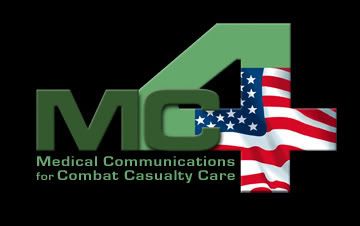MC4 launched a new blog giving users of the MC4 system the opportunity post your stories and experiences while deployed. Below is a story submitted by an MC4 systems administrator. Cody Smith, the first MC4 SA deployed to Iraq, relays a trip via Stryker convoy to Tal Afar, Iraq.
------------------------------
I forget the exact date but it was in late 2003 or early 2004 when I was the first and only MC4 Systems Administrator (SA) in Iraq. At that time there were no established rules of engagement on how to support the units...I was basically figuring things out as I went along.

The unit I was supporting at the time was covering a division-sized area with about one-fourth of the needed troops, so they were spread out pretty far. The air taxi service (UH-60 Blackhawks) had not really been established for travel within Northern Iraq, especially in places near the Syrian border. So I had to convoy from place to place.
One of the units I supported, 1-14th Cavalry Squadron, 3rd Stryker Brigade Combat Team, 2nd Infantry Division, had a small element of personnel who were manning a location in the middle of Tal Afar city. This particular unit had been requesting to have me setup their MC4 systems and train their providers and medics. So I coordinated my movement through Squadron Headquarters and was told that I would be riding in the back of a Stryker the following day.
I wasn't really nervous about the trip since, just two weeks before, I convoyed from Balad to Tal Afar in a vehicle with no armor. So the following day I showed up at the manifest area, received my convoy brief and got in the back of the Stryker with all my gear. I had no idea where exactly I was going, I just knew it was in the city.
During the ride to this particular location, I became very disoriented with all of the twists and turns and driving on curbs and through the median. I was not able to see anything outside of the vehicle as the Long Range Advanced Scout Surveillance System (LRAS3) monitor was not turned on. It was a relatively short ride to the location, about 20 minutes or so.
When we finally arrived and the Stryker vehicle came to a stop, the platoon leader (PL) ordered his troops to drop the back hatch and to establish a security perimeter around the three Strykers in the convoy. The back hatch dropped and all of the Soldiers ran out of the Stryker to setup their positions. The hatch went back up to protect the remaining personnel in the Stryker.
After sitting for a few minutes, the platoon leader looked down through his hatch and asked if I was ready to make a run for the front entrance of the compound. I responded with a nod and grabbed my computer case and my assault pack.
Seconds later the back hatch dropped once again and the PL yelled, "Go!," and so I did! Keep in mind I had no idea where I was or where I was supposed to be running to. I just knew that I was outside of the compound on some street in the city and I had to get inside the compound as soon as possible.
So after the hatch dropped I ran out of the Stryker and started heading the exact opposite direction of the compound and into the city! I was clued in on this fact by a few Soldiers who
 were pointing and yelling, "Not that way, the other way!"
were pointing and yelling, "Not that way, the other way!" When I finally made it into the front entrance of the compound, I felt very relieved.
Looking back, it was a great time.
One of the soldiers who rode in one of the Stryker vehicles that day has since left the military and works down the street from where I live. I took a picture of him sitting on the back hatch of one of the Strykers eating lunch. Later, I was able to send him a copy of that picture and reminisce about everything that happened during that deployment.





